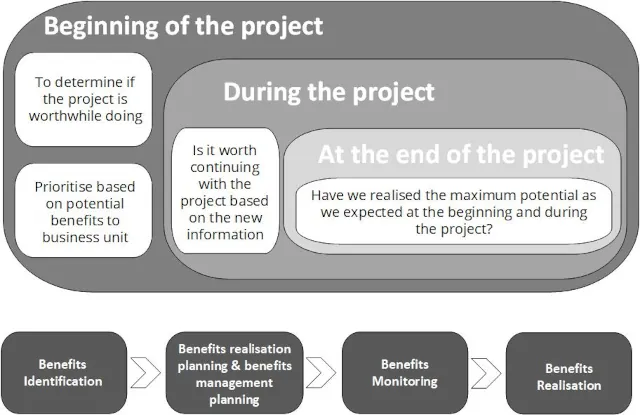
In the world of RPA, every project should start with clearly defined objectives and execution plan. Delivering to these objectives begins with defining the expected high-level outcomes before a program or project is approved. This is where benefits management can help.
Benefits management is a set of processes ensuring a program or project delivers business value to an organisation. This also includes identifying, profiling, tracking, adjusting, and embedding the actual benefits.
Organisations typically go through a due diligence process to select the right opportunities for improvements and determine whether a project delivers benefits to the business or not. These benefits could be tangible or intangible and should have a significant impact on the bottom line.
However, what if an organisation doesn’t undertake this step? No doubt they’ll find themselves attempting to retrofit a compelling return on investment (ROI) after the fact.
In the case of robotic process automation, this becomes challenging. For example, the implementation may have already progressed too far. The opportunity cost of stopping could be too great, which is why the question ‘should we automate or not?’ should be asked at the beginning of the process.
Obviously, it’s important to have the right-size governance in place. This will ensure the benefits profile of the program of work is monitored and worked through. Of course, automation may not be an ideal solution in all cases. However, the business may also need to consider the benefits of automating vs business process re-engineering (BPR).
To automate or not to automate, that is THE question at the beginning of the project. RPA projects need to have a well defined ROI and executive sponsorship in order to succeed.
By using benefits management businesses will:
- Identify and clearly define the benefits
- Keep benefits within realistic boundaries of scope and value
- Ensure business areas play a significant role in the ownership of benefits during program or project execution and beyond
- Proactively manage the process of benefit realisation, including benefits measurement
- Continuously monitor and report on benefit realisation
Measuring these benefits ensures ROI is achievable as shown in this diagram:

Here at AUP IT, we have the expertise to work with you to develop a roadmap aligned with your strategic objectives. This will enable delivery of a structured program of work to maximise your ROI.
With our Intelligent Automation practice, you can streamline operations to
reduce costs and risks, improve efficiency, processing times and error rates.
Read more about our process automation services or contact us if you’re ready for an obligation free discussion.
